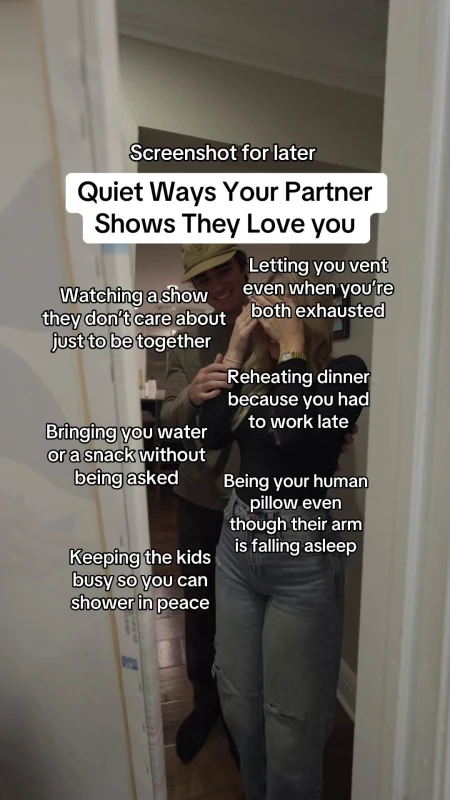hen betrayal happens in a marriage, it changes everything. It’s possible to rebuild trust but it requires effort, honesty, and commitment from both partners. Here’s a quick guide to the process:
- Understand the impact: Betrayal causes deep emotional pain, including shock, anger, and anxiety, for both the betrayed partner and the one responsible.
- Take responsibility: The person who caused the betrayal must own their actions, apologize sincerely, and make consistent efforts to change.
- Set boundaries and commit to transparency: Clear boundaries and open communication rebuild trust over time. This includes sharing feelings, being honest, and eliminating secrecy.
- Reconnect emotionally: Small, consistent actions like active listening, showing appreciation, and creating new habits that help you connect, help heal emotional wounds.
- Use tools and resources: Exercises like gratitude journaling, weekly check-ins, and even digital platforms or professional counseling can help your recovery.
Let's take a deeper dive into the required steps to rebuild trust after betrayal.
Steps to Rebuild Trust After Betrayal
Healing from betrayal takes time, patience, persistence, and a willingness from both partners to actively participate in rebuilding the relationship. Progress happens when both partners are dedicated to repairing the damage and finding new ways to communicate with honesty and respect.
Accepting Responsibility and Apologizing
The first step must come from the individual who caused the betrayal. They need to take ownership of their actions, listen without becoming defensive, and offer a heartfelt, specific apology. A genuine apology goes beyond a simple "I'm sorry." It means acknowledging exactly what went wrong and accepting full responsibility without deflecting blame. At the same time, the betrayed partner needs space to process their emotions, while the one who caused the hurt remains open to honest and sometimes difficult discussions.
Taking responsibility means backing up words with actions. This might include cutting ties with certain people, changing daily routines, or making all aspects of life more transparent. These consistent efforts are what begin to rebuild the foundation of trust.
Once accountability is firmly established, the focus naturally shifts to setting boundaries and fostering openness.
Creating Boundaries and Openness
Clear boundaries help you both know what’s okay and what’s not as you move forward. Being open with each other is key, as secrecy is one of the quickest ways to damage trust again. That might mean steering clear of one-on-one situations with certain people that could put your relationship at risk, making sure you’re keeping each other in the loop, and talking through important decisions together. For some couples, it also means sharing passwords or giving each other access to devices - not as a way to control, but as a way to rebuild that sense of safety.
Once boundaries are defined and openness is prioritized, the next focus is on rebuilding the emotional connection.
Reconnecting Emotionally
Reconnecting on an emotional level requires consistent, thoughtful actions that show care and dedication. The betrayed partner should feel free to express their pain without fear of being dismissed or rushed. Open conversations about what led to the betrayal and how it has affected both partners will help move things forward. Forgiveness is also an important part of the healing process - both forgiving the partner and oneself. However, it’s important to note that forgiveness doesn’t mean forgetting or returning to how things were overnight.
Rebuilding emotional intimacy often involves creating new habits of connection. This might mean starting a nightly check-in where you share one good thing from your day and one thing that was hard, cooking a meal together once a week and making it screen-free time, or sending a quick “thinking of you” text during the day. These rituals matter because they carve out intentional moments of presence - they remind you to pause, notice each other, and reconnect without distractions. It could be as simple as going for a short walk together after dinner to talk and decompress, or leaving little notes of appreciation where your partner will find them. These small but consistent efforts help replace distance with closeness and show your partner that rebuilding the bond matters to you.
Exercises and Tools for Building Trust
Rebuilding trust doesn’t happen overnight - it’s a process that requires consistent effort and practical steps. While open communication lays the groundwork, specific exercises and tools can help strengthen your bond over time. Combining thoughtful communication techniques, daily habits, and a little help from digital tools can make the journey smoother and more effective.
Communication Methods That Work
Clear, empathetic communication is key to rebuilding trust. Here are some methods that can make a real difference:
- Active listening: This means giving your full attention, maintaining eye contact, nodding, and offering reflective feedback. Instead of jumping to defend yourself, try to mirror what your partner is saying to show you truly understand their feelings.
- "I" statements: Express your emotions without placing blame. For instance, say, "I feel distant when we don’t talk during dinner," instead of accusing them. This helps keep the conversation calm and makes it easier to actually hear each other.
- Emotional check-ins: Set aside time each week to ask questions like, "How are you feeling about us this week?" or "What do you need from me right now?" These regular conversations can help address small concerns before they escalate into bigger issues.
- Nonverbal communication: Your body language, facial expressions, and tone often say more than words. Paying attention to these cues can help you better understand your partner’s emotions.
Daily Trust-Building Activities
Small, consistent efforts often have a bigger impact than grand gestures. Incorporate these daily practices to nurture trust:
- Morning affirmations: Start the day with a simple statement like, "I am committed to rebuilding trust." This keeps your focus on the positive steps you’re taking.
- The "trust jar": Write down moments of trust or appreciation on small notes and place them in a shared jar. Reading these together each week offers a tangible reminder of your progress.
- "Truth time": Dedicate 15 minutes each evening to ask and answer honest questions about your relationship. This practice helps you get comfortable with vulnerability over time.
- Gratitude journaling: Write down three things you appreciate about your partner or relationship each day, then share them weekly. This shifts focus toward the positive and reinforces your connection.
- Mindfulness activities: Take a few minutes to practice deep breathing or go for a mindful walk together. These moments help you stay present and manage emotions.
- Acts of kindness: Simple gestures like leaving a thoughtful note or cooking a favorite meal can go a long way in showing your commitment.
Additional Resources for Growth
There are numerous resources that can further support trust recovery. Books and community-based programs offer diverse perspectives on healing and provide additional ways to strengthen your relationship.
Books for Trust Recovery
Books can be an excellent source of guidance, offering practical strategies and insights for rebuilding trust after betrayal. Here are some highly regarded options:
- What Makes Love Last? by John Gottman and Nan Silver introduces a three-stage model - Atone, Attune, Attach - that guides couples through processing past hurts, reconnecting emotionally, and recommitting to their relationship. This approach aligns with the Gottman method, which is widely embraced by OurRitual.
- Not "Just Friends": Rebuilding Trust and Recovering Your Sanity After Infidelity by Shirley Glass provides a step-by-step guide for navigating betrayal recovery. Glass delves into the trauma caused by infidelity and offers actionable advice for healing, making it especially helpful for couples dealing with such challenges.
- Rebuilding Trust after Betrayal: Hope and Help for Broken Relationships by Gregory L. Jantz Ph.D. and Keith Wall offers daily, practical advice for couples working to rebuild trust. Its high Amazon rating of 4.9 reflects its usefulness for readers.
These books emphasize core principles like transparency, consistency, and patience. They also underscore a key takeaway: "Trust is built over time through consistent, changed behavior". By combining these readings with other forms of support, couples can gain a more comprehensive understanding of trust recovery.
Whether you turn to books, local support groups, or online platforms, the most important step is to choose resources that align with your values and relationship goals. These tools can provide the structure, encouragement, and accountability needed to rebuild trust and create a stronger, more secure bond.
Conclusion: Building a Stronger Marriage
Rebuilding trust after betrayal is one of the hardest challenges a couple can face. But when both partners are fully committed, it can also become one of the most rewarding. It requires courage, patience, and a willingness to be vulnerable, even when the past still stings.
The goal of this journey is to move forward together and create something stronger than before. That means building healthier communication, truly listening to one another, and responding with empathy. Over time, those habits form a foundation that can help your relationship thrive, even after it’s been through difficult moments.
The key to long-term success lies in prioritizing the relationship every single day. Whether it's through regular check-ins, spending quality time together, or building fresh, positive memories, both partners must actively choose forgiveness and connection. This isn’t a one-time decision - it’s a daily commitment.
Remember, this process won’t always be smooth - and that’s okay. Healing from betrayal comes with its share of ups and downs, and setbacks are a normal part of the journey.
Small victories along the way can make all the difference. A day without conflict, a shared laugh, or successfully navigating a tough conversation - these moments are worth celebrating. They serve as reminders of how far you’ve come and how much potential your relationship holds.
FAQs
What steps can couples take to rebuild trust and improve transparency after betrayal?
Rebuilding trust after betrayal is no small task - it demands a genuine commitment from both partners to honesty and clear communication. This means being upfront about daily routines, sharing emotions without holding back, and tackling concerns head-on without becoming defensive. For instance, some couples may choose to share passwords or openly discuss social media interactions as a way to restore a sense of security.
It can also help to establish a structured approach to transparency. This might involve setting aside dedicated time for honest conversations about how the relationship is progressing and addressing any challenges that arise. Owning up to mistakes and working together to rebuild emotional closeness are vital steps in this process. These efforts create a foundation where trust can grow, allowing both partners to heal and move forward together.
What are some effective digital tools couples can use to rebuild trust after betrayal?
Couples looking to strengthen their relationship can turn to digital tools like relationship apps and online resources. Many apps designed for couples come with features such as shared goal-setting, regular check-ins, and exercises aimed at fostering open communication and emotional closeness. Additionally, digital workbooks and online courses offer structured activities that focus on trust-building and accountability.
What makes these tools appealing is their convenience and privacy. They allow you to work on your relationship at your own pace while tracking progress and staying committed to the process. Incorporating these resources into your daily life can help create a nurturing space for rebuilding trust and deepening your connection.
What are the key signs that show trust and emotional connection are being rebuilt after betrayal in a marriage?
Rebuilding trust is a gradual process, but there are key indicators that show progress. These include open and honest communication, where both individuals feel secure sharing their emotions; actions that consistently match words, demonstrating dependability and accountability; and authentic remorse and forgiveness, with both partners actively working toward healing. You might also observe a renewed sense of emotional connection and intimacy, along with a deeper commitment to the relationship. Often, it’s the small, steady improvements that signal meaningful growth over time.






















